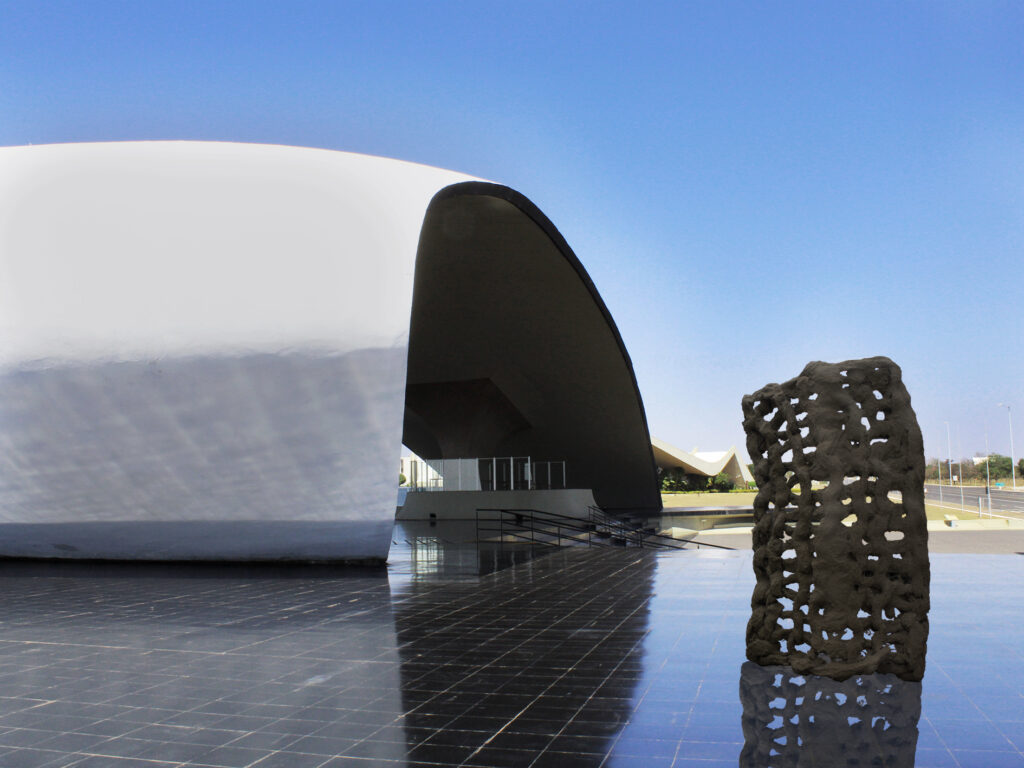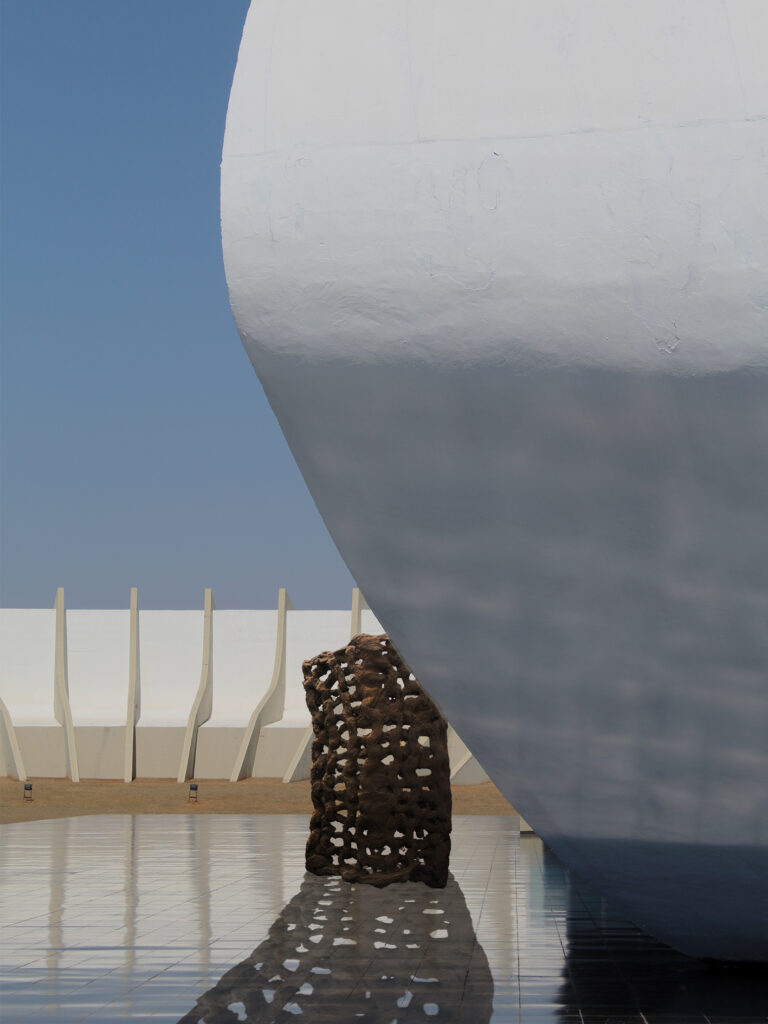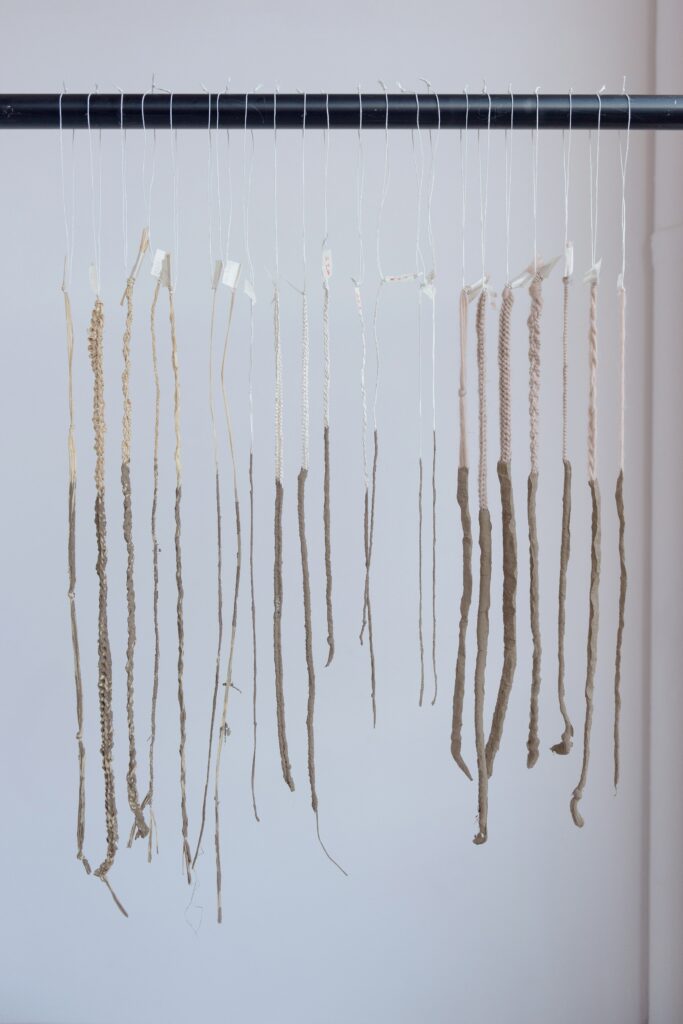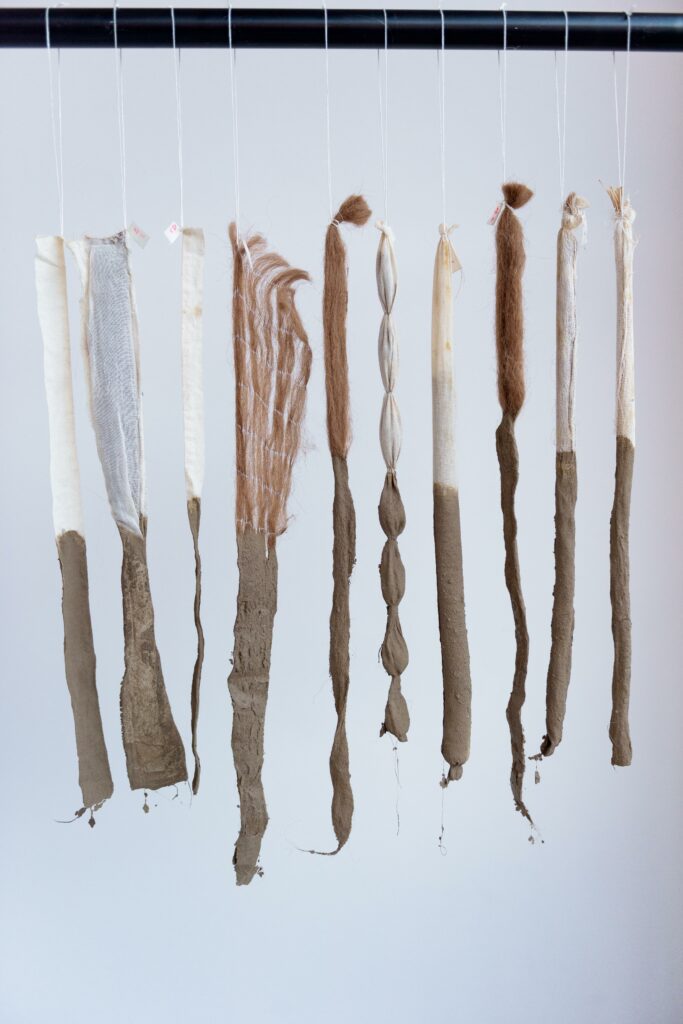Deutsch
English
SZENARIO
Wie können textile Oberflächen mit dem traditionellen Baustoff Lehm kombiniert werden, um daraus eine Oberfläche zu bilden, die selbsttragend, robust und formsolide ist und die stabilisierend auf das Raumklima wirkt?
23.02.2121
Der Himmel über Berlin wird gläsern!
Berlin. Feierlich wurde heute Morgen um Punkt 8 Uhr der Grundstein für die Gläserne Kuppel über Berlin am Brandenburger Tor gelegt. Es ist seit Jahrzehnten das umfang- reichste Infrastrukturprojekt der Hauptstadt und wird mit einer Größe von 892 km2 das bisher größte Gewächs- haus der Welt. Die Wüstenstadt Berlin kann in wenigen Monaten schon zu einer grünen Oase werden – denn innerhalb der Kuppel kann ein geschlossenes und stabiles Mikroklima erzeugt werden. Die Bauzeit ist geplant für 3 Monate, ein ambitioniertes Vorhaben, doch die Regieren- de Bürgermeisterin versichert, es sei alles gut vorbereitet. Das 55 Millionen schwere Projekt sei die einzige Möglichkeit, die der Regierung geeignet erscheint, um die Hauptstadt wieder zukunftsfähig und lebenswert zu gestalten.
KONZEPT
Neuer öffentlicher Raum erfordert neues Material
Mit dem Kuppelbau ändert sich die gesamte Gesellschaftsstruktur: Menschen können endlich wieder rausgehen, sich treffen, im Freien spielen und sich außerhalb der schützenden vier Wände sicher fühlen. Sie bewegen sich anders durch die Straßen, nutzen den öffentlichen Raum vielmehr als Aufenthaltsort und erheben somit neue Anforderungen an diesen. Ebenso verändern sich die Anforderungen an die Materialien, die sich im öffentlichen Raum befinden. Das liegt einerseits an den veränderten Bedürfnissen der Menschen als auch an dem neuen Mikroklima: wie in einem Gewächshaus üblich, ist es unterhalb der Kuppel feucht und warm.
Textiler Lehm als spekulative Antwort
Mit dem Textilen Lehm soll ein Material herausgearbeitet werden, das auf jene neue Anforderungen eingeht und innerhalb der Gläsernen Kuppel einen ökologischen, sozialen und praktischen Nutzen bieten könnte. Er besteht aus den zwei Materialien Lehm und Strickware. Lehm bietet den Vorteil, dass er positive raumklimatische Eigenschaften besitzt, denn er kann auf die Temperatur und die Luftfeuchtigkeit des Raumes einwirken und diese ausgleichen. In Kombination mit Fasern und Sand kann Lehm ein sehr robustes Material werden. Anstelle loser Fasern wird für den Textilen Lehm Strickware verwendet, wodurch das Material plastisch formbar wird.
SCENARIO
How can textile surfaces be combined with the traditional building material clay to form a surface that is self-supporting, robust and dimensionally stable and that has a stabilizing effect on the indoor climate?
23.02.2121
The sky above Berlin becomes glass!
Berlin. This morning at 8 o'clock sharp, the foundation stone was ceremoniously laid for the Glass Dome over Berlin at the Brandenburg Gate. For decades, it has been the capital's most extensive infrastructure project and, with a size of 892 km2, will be the largest greenhouse in the world to date. The desert city of Berlin can become a green oasis in just a few months - because a closed and stable microclimate can be created inside the dome. The construction time is planned for 3 months, an ambitious project, but the Governing Mayor assures that everything is well prepared. The 55-million project, she says, is the only option that seems suitable to the government to make the capital city sustainable and livable again.
CONCEPT
New public space requires new material
The dome construction changes the entire structure of society: people can finally go out again, meet, play outdoors and feel safe outside the protective four walls. They move through the streets differently, using public space more as a place to stay and thus making new demands on it. Similarly, the demands on the materials found in public space are changing. This is due on the one hand to people's changing needs and on the other to the new microclimate: as is usual in a greenhouse, it is humid and warm underneath the dome.
Textile clay as a speculative answer
Textile Clay is intended to elaborate a material that responds to those new demands and could provide environmental, social, and practical benefits within the Glass Dome. It consists of two materials, clay and knitted fabric. Clay offers the advantage of having positive indoor climatic properties, as it can act on and balance the temperature and humidity of the room. In combination with fibers and sand clay can become a very robust material. Instead of loose fibers, knitted fabric is used for the textile clay, which makes the material malleable.






